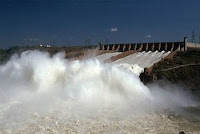Water Dams/Hydro Power - the Special Issue of the _kt75 | notes 02/2013

-- a _kt75 | note Tweet _download: server 1 Big is beautiful? [1] – The solutions for sustainable water management/alternative energy generation by means of water dams are multifarious and range from very small hydro power projects to largest scale dam solutions. Currently, there seems to be a certain tendency towards the latter option in particular in developing and emerging countries. In this context, the Ethiopian Grand Renaissance dam and the Congolese Grand Inga Dam represent the most known examples of large scale water dams. A widely discussed key question however is: comply such gigantic structures with the idea of sustainable development? What are the implications associated with the construction of such facilities and how efficient (from an economic point of view) are they? Are there any geo-political consequences and in case of what type of are they? In order to address some of the above questions and to provide for a better understanding of





